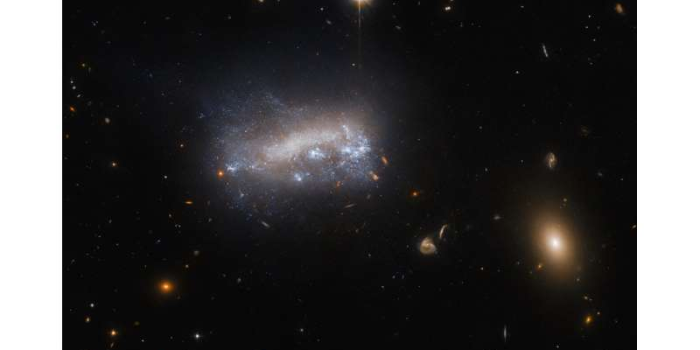NASA’s Hubble Space Telescope has taken a breathtaking picture of LEDA 42160. It is a galaxy in the Virgo constellation that is about 52 million light-years away. Ram pressure from intergalactic gas exerts an extraordinary impact on this dwarf galaxy, producing stars within the atmosphere of the Virgo cluster.
The way galaxies evolve is heavily influenced by ram pressure (the resistance of gas and dust) in space. The management of LEDA 42160’s star production activity depends on this phenomenon. Ram pressure can compress the gas inside a galaxy to expedite star formation, but it can also deplete the galaxy of its star-forming material, which prevents new stars from being born.

The observation of LEDA 42160 is a component of a broader study of dwarf galaxies in large-scale galaxy clusters, including the Virgo cluster, that undergoes ram pressure stripping. By doing this, astronomers intend to ascertain whether star formation is triggered by ram pressure in a way comparable to that of more massive galaxies.
In particular, there is compelling evidence of potential star-forming regions that may be initiated by ram pressure stripping in the lower-right section of LEDA 42160, as indicated by the noticeable dazzling patches. Scientists want to unravel the mechanisms that formed this galaxy’s distinct features with more analysis of Hubble’s data.

Hubble’s analysis of LEDA 42160 is crucial for our understanding of the connection between ram pressure and galaxy evolution. Astronomers are getting closer to comprehending the more considerable cosmic processes that control the universe by unraveling the star formation mechanisms like LEDA 42160.


